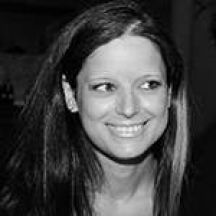Photographing HIV-positive children was very traumatic, particularly as I was the mother of two healthy children. At first, I just put my cameras down and sobbed. But, despite the sad stories, there are so many brave people out there.
Ever since its invention back in the 19th century, photography has been documenting life. At the same time it focuses on inviting audiences to a rather subjective world, while trying to be taken serious as an art form. Photography has always been considered a male dominated profession, but luckily things are changing. Scholars, writers, bloggers, photography students and enthusiasts have been giving due to the female pioneers of the field. Most of them were always standing and/or hiding in the shadows, oblivious to how much they could acclaim and accomplish. Arguably, the technique, concepts and thematic female photographers use differ from those of a male photographer. At a time when most women were convinced that their place was in the kitchen and certainly not in the dark room, there were those who were struggling to surpass their male counterparts and work towards gaining respect and recognition for their work.

Gisèle Wulfsohn (South African photographer, 1957-2011) studied Graphic Fine Art at the Johannesburg College of Art, after which she joined The Star newspaper in 1979, where she worked as a staff photographer. In 1983 she became staff photographer for STYLE magazine, and in 1986 she was appointed chief photographer for Leadership Magazine. A year later she went freelance and joined AFRAPIX - a photographic collective that documented social issues and the anti-apartheid struggle. From the late 1980's until pretty much the unexpected and untimely end of her career, Wulfsohn documented various HIV/Aids awareness initiatives. In 1999-2000, while working for the Department of Health's Beyond Awareness Campaign, she compiled a series of portraits of 31 South Africans who had publicly disclosed their HIV status. Her Living Openly photographs were published extensively in newspapers and magazines around South Africa, and were exhibited at the Durban International Aids Conference (July 2000). This project was also featured on TV and The Living Openly Exhibition has been displayed at various centres and conferences in KwaZulu Natal and Gauteng, including at the Aids In Context Conference at WITS University in April 2001. Wulfsohn's spirit and determination were evident from the start of her career and she specialized in sensitive portraiture. She documented work, education, health and gender issues. Gisèle was diagnosed with inoperable lung cancer in 2005, and lived until 2011. The Centre for The Study of AIDS at the University of Pretoria produced an illustrated calendar of her work just before she died. After she died a bursary in her name was established by her family and friends at the Market Photo Workshop in Johannesburg to support young photographers committed to using photography to document important social issues. A major retrospective exhibition of Wulfsohn's photographic work was opened at the Wits Art Museum in August 2022.

Pia Arke (Kalaaleq-Danish visual and performance artist, writer and photographer, 1958-2007) was born in Uunarteq, Cape Tobin and settled in Copenhagen in 1987. A year later, the artist produced her own life-size pinhole camera (camera obscura), which she hand-built using pine and plywood, to photograph the landscapes of Greenland that she had known as a child. She then entered The Royal Danish Academy of Fine Arts to study painting and photography and graduated in 1993. That same year, Arke entered the Department of Theory and Communications at the Royal Danish Academy of Fine Arts. She graduated with an MFA in 1995 with a published thesis titled, Ethno-Aesthetics/Etnoæstetik, an essay that powerfully critiques Western romantic and primitivistic stereotyping of "Eskimo" art, foregrounding critical issues of cultural identity and authenticity in art. Arke's exhibition Arctic Hysteria was described as provocative and controversial because of the irrationality that was said to affect indigenous women. The artist's exhibitions and accompanying explanations encouraged Denmark to re-examine the colonial history of Greenland. While a number of exhibitions were held during her lifetime, the first major exhibition of Pia's work in Denmark did not take place until after her death (2010). Arke died of cancer in May 2007 and was considered to have achieved the goal of getting Denmark to reconsider its role. However, this is still unclear. Her books have been re-issued and a film and exhibition was created in 2010 at the National Museum of Denmark. Her 1995 book Ethno-Aesthetics and Stories from Scoresbysund (2003) were made available in English, Danish and Greenlandic. The exhibition was then moved to Sweden and Greenland.

My images are about the silence that envelopes the ties between Greenland and Denmark. I was born into that silence myself.
We will continue talking about female names that left their mark in photography and about contemporary female photographers who are still to emerge. There are a lot of female photographers out there deserving of praise and we can only hope to cover as many of them as we can. Please, follow this space to find out more.






